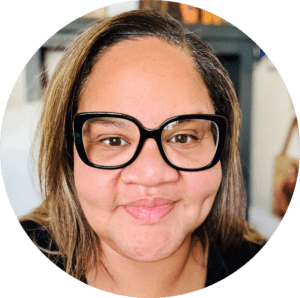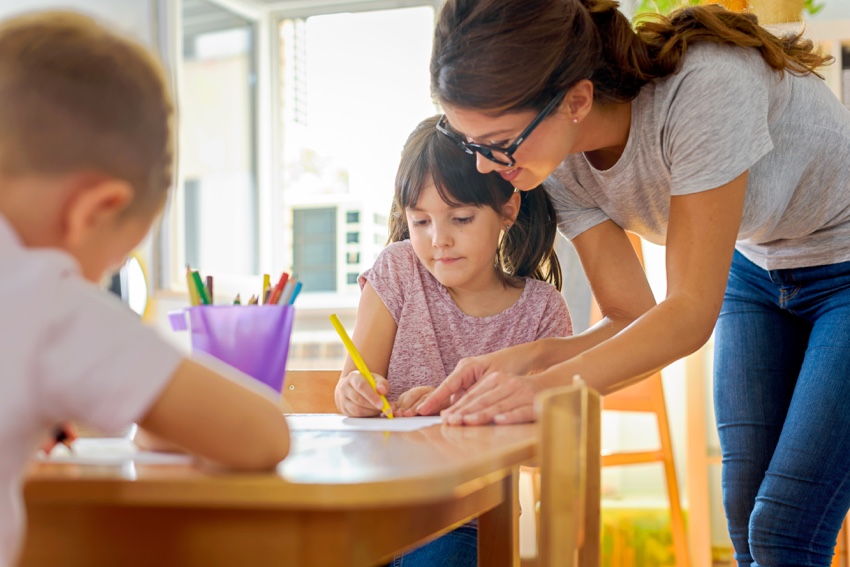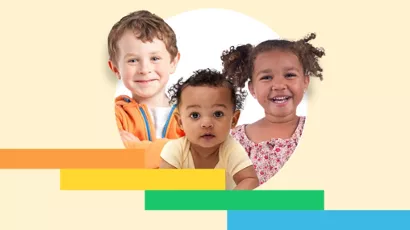I Can See Clearly Now: The Curriculum and Assessment Connection


I recently read “Dare to Lead” by Brené Brown and one of my key takeaways from the book was this gem: “Clear is Kind. Unclear is Unkind.” While Brené was talking about leadership principles, this refrain keeps coming up in my thoughts as I consider the relationship between curriculum and assessment.
In my earliest days as an early childhood educator, I didn’t know anything about curriculum. As a lead teacher, I knew I was responsible for creating lesson plans—and boy was I great at that! Each month, I would come up with themes, then activities to support the themes, then projects to expand on the themes, and, as quickly as one month was over, I was on to the next theme. While I now understand that this wasn’t the best way to educate young children, that got me through while I was working on my master’s degree.
Then I graduated and became a teacher in an elementary classroom. For the first time, I was given a curriculum from which to develop my lesson plans and I had to use a progress monitoring system to demonstrate that my students were on track to meet our end-of-term objectives. It was also made clear to me that my lesson plans could not be thematic. Gulp!
The panic was real and I went into overdrive trying desperately to simultaneously figure out the curriculum and the progress monitoring system while also learning who my new students were. I needed clarity and kindness; I got neither.
I know that starting this post with this anecdote may be a bit of a downer for you, but I wanted to explain my context for talking about curriculum and assessment. I need you to know that I am coming from a place of hard-earned experience and that I have gained a sense of myself as an ever-evolving early childhood educator. There’s a saying that starts with the phrase “Be who you needed when…” and then you fill in the blank. In this case, I want to be clear and kind by talking practically about the connection between early childhood curriculum and assessment in the early childhood classroom because that is what I needed most when I was an early childhood teacher.
What is “curriculum”?
The first important thing to do is to establish what we mean when we say “curriculum.” The Head Start Early Childhood Learning and Knowledge Center (ECLKC) has a beautiful definition of a high-quality, research-based curriculum that includes the following three elements. According to the definition, curriculum
- provides guidance on what and how to teach;
- provides ways to create nurturing and responsive practices, interactions, and environments that foster trust and emotional security; and
- promotes measurable progress toward children’s development.
What is “assessment”?
Stated clearly, curriculum is the “what” of teaching. In practice, it looks like a defined set of learning objectives and standards. Now that we have defined curriculum, the next important thing to do is to define assessment.
In a joint position statement from the National Association for the Education of Young Children (NAEYC) and the National Association of Early Childhood Specialists in State Departments of Education (NAECS/SDE), the assessment process is supposed to serve three beneficial purposes for early childhood programs. Assessment should equip programs to
- make sound decisions about teaching and learning,
- identify significant concerns that may require focused intervention for individual children, and
- improve their educational and developmental interventions.
Essentially, assessment is the process of determining “how” your teaching practice is going. In practice, it is mostly the use of processes that allow you to collect evidence of learning through techniques like observation and ongoing progress monitoring. So, how do these two things (curriculum and assessment) get linked together? Allow me to share with you one of the kindest, clearest ways in which the link between curriculum and assessment has ever been explained to me.
The link between curriculum and assessment
A few years ago, when I was still at the Arizona Head Start Collaboration Office, I had the privilege of facilitating a professional development presentation by WestEd’s Senior Scientist, Margaret Heritage, and it fundamentally changed the way I thought about curriculum and assessment. According to Ms. Heritage, the teaching and learning feedback loop—the core of the link between curriculum and assessment—is summed up in three questions: “Where am I going?,” “Where am I now?,” and “Where to next?” Let’s break that down even further to make it crystal clear.
- Where am I going?
This question is about the curriculum. The answer to this question will lead you to deciding which learning standards and goals to set for your group of children when the year begins. By establishing your direction, you are making clear to the children and to yourself that you have a plan. - Where am I now?
This question is about assessment and will help you determine exactly where each child is at the beginning of their journey. In essence, by asking this question, you learn how close or how far each child is from meeting the learning goals and standards you’ve set. This point is also where you start to gather evidence to support your determination. - Where to next?
This is the smallest step, but it has the potential to have the biggest impact on student outcomes. In this step, you make decisions about the individualization children need to close the gap between where they are and where they are headed. This is where you make intentional decisions about your teaching in response to what you know about the children in your group. As you start to implement studies, activities, and experiences with the children in your class, you can then go back to the first question—“Where am I going?”—and start the process all over again.
Linking curriculum and assessment in your own classroom
If I were to put on my teacher hat again, I would be thinking, “Sure, that sounds easy enough, but how do I fit this into my everyday practice?” You could start by taking inventory of what you are currently using for curriculum and assessment. Then, ask yourself the questions laid out by Ms. Heritage. As you answer the questions, write down your responses and see if you can begin to formulate a simple teaching plan that you can start to implement tomorrow. If you use The Creative Curriculumand GOLD, take advantage of the digital curriculum resources that you have access to on SmartTeach. These resources are designed to help you with everything from planning where you are headed to determining where children are in the moment and implementing intentional, responsive instruction for the children in your group. All GOLD users have access to a selection of Intentional Teaching Experiences or Intentional Teaching Opportunities in SmartTeach. Additionally, subscribers to the digital curriculum resources gain access to digital versions of ALL of the Intentional Teaching Cards from The Creative Curriculum and can access digital Mighty Minutes through our mobile app.
See it in action.
I shared with you how Ms. Heritage’s profound explanation of curriculum and assessment changed my life, but I didn’t give you an example. So, here’s one for you: my daughter, who just turned four this summer, started showing interest in simple addition just a few weeks before her birthday. She would ask me things like, “What is one and one?” or “If you and dad are in the kitchen, how much is that?” Given what I know about developing numeracy skills (I have done a lot of work on Arizona’s Early Learning Standards), I knew where we were headed. At age three, she should start to reliably give correct answers for addition problems using small quantities. From the questions she was asking me, I knew small quantities like 1 and 2 would be appropriate for her. I knew where we were at the moment. So, one night while playing “bubble gum, bubble gum, in a dish” with our hands, I asked her, “If you have two pieces of gum in one hand and two pieces of gum in the other hand, how many do you have?” She looked at me quizzically, raised two fingers on one hand and one finger on the other hand, and began to count them. This went on for about 20 minutes with me giving her quantities to add and her jumping up and down each time she had the correct answer (she got them all right, so there was a lot of jumping). At the end of the night, I made a mental note to myself that this type of play is what she needs more of tomorrow and the next day and every day until she has mastered this skill.
For me, that was the connection between curriculum and assessment on display. If I can get there, friends, I have every confidence that you can, too.

Move beyond measurement.
With GOLD, assessment is an authentic part of instruction, not a disruption. Inform instruction by embedding authentic, observation-based assessment into each part of your day.